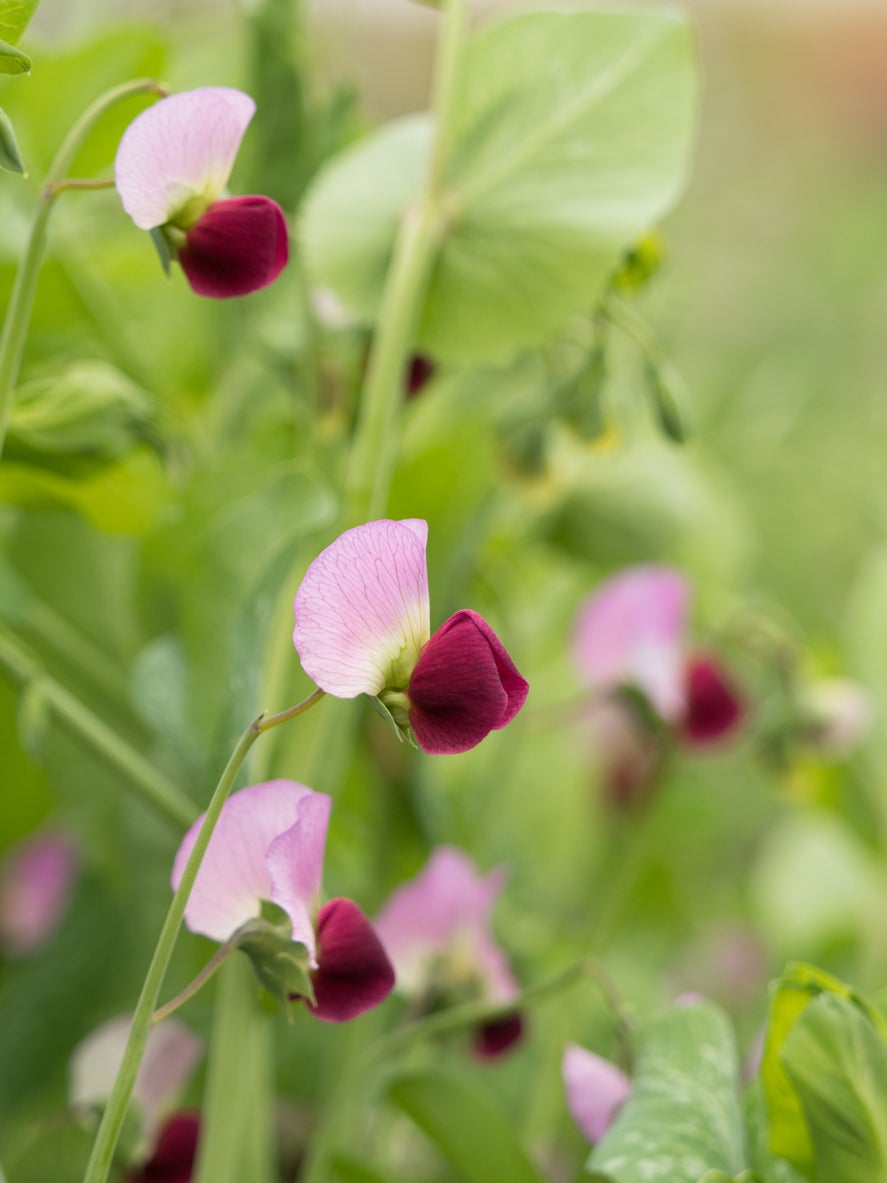Pea ‘Dwarf Gray Sugar’ – Tips On Caring For Dwarf Gray Sugar Peas


with Teo Spengler
If you’re looking for a plump, tender pea, Dwarf Gray Sugar pea is an heirloom variety that doesn’t disappoint. Dwarf Gray Sugar pea plants are bushy, prolific plants that reach heights of 24 to 30 inches (61-76 cm.) at maturity but are known to get somewhat larger.
Growing Dwarf Gray Sugar Peas
Gardeners love this pea plant for its lovely purple blossoms and early harvest. The Grey Sugar bush pea bears small pods that are delightfully sweet and delicious with a crisp texture. They are usually eaten in the pod, either raw, steamed, or in stir-fries. The reddish lavender flowers add color to the garden, and because the blooms are edible, they can be used to perk up a green salad.
If you read up on the plant, you’ll find many good reasons to consider this variety. Those growing Dwarf Grey Sugar peas report that the pods are plump, fleshy, and very tender and suggest that you harvest them young. However, don’t take the “dwarf” label as a sign that these are truly small plants. They can, and often do, grow to 4 or even 5 feet (1-1.5 m.) tall.
These sugar peas grow well in both northern and southern states, and are heat and cold tolerant. They thrive in USDA plant hardiness zones 3 through 9. Caring for Dwarf Gray Sugar peas is uninvolved as long you provide plenty of moisture and bright sunlight.
Dwarf Gray Sugar peas prefer cool weather and can be planted as soon as the soil can be safely worked in spring. You can also plant a later crop about two months before the last frost.
Peas prefer fertile, well-drained soil. Drainage is very important, and sandy soils work best. Check your soil pH, and, if necessary, adjust it to above 6.0 by using lime or wood ash. Dig in a generous amount of compost or well-rotted manure a few days prior to planting. You can also work in a handful of general purpose fertilizer.
Sign up for the Gardening Know How newsletter today and receive a free copy of our e-book "How to Grow Delicious Tomatoes".
To get started, direct sow the seeds, allowing 2 to 3 inches (5-8 cm.) between each seed, into the prepared garden plot. Cover the seeds with about an inch (2.5 cm.) of soil. Rows should be 16 to 18 inches (40-46 cm.) apart. Watch for them to sprout in about a week’s time. The peas grow best in a sunny or partially sunny location. Peas require no thinning but do need regular irrigation.
Dwarf Gray Sugar Pea Care
Water your seedlings regularly to keep the soil moist but never soggy. Increase watering slightly when the peas begin to bloom. Irrigate Dwarf Gray Sugar pea plants early in the day or use a soaker hose or drip irrigation system so the plants have time to dry before dusk.
Apply a thin layer of dried grass clippings, straw, dry leaves, or other organic mulch when the plants are about 6 inches (15 cm.) tall. Mulch keeps weeds in check and prevents the soil from becoming too dry.
A trellis installed at planting time isn’t absolutely necessary for Dwarf Sugar Grey pea plants, but it will keep the vines from sprawling on the ground. A trellis also makes the peas easier to pick.
Dwarf Gray Sugar pea plants don’t need much fertilizer, but you can apply a small amount of general-purpose fertilizer every four weeks. Remove weeds when they are small, as they will rob moisture and nutrients from the plants. Be careful not to disturb the roots.
Dwarf Gray Sugar pea plants are ready to harvest about 70 days after planting. Pick peas every few days, beginning when the pods begin to fill out. Don’t wait until the pods get too fat or tenderness will be lost. If the peas grow too large for eating whole, you can remove the shells and eat them like regular garden peas. Pick peas even if they’re past their prime. By picking regularly, you stimulate production of more peas.
If you are looking for a sugar pea plant with bright and lovely flowers followed by sweet pods, then this is definitely the plant for you.

A Credentialed Garden Writer, Mary H. Dyer was with Gardening Know How in the very beginning, publishing articles as early as 2007.